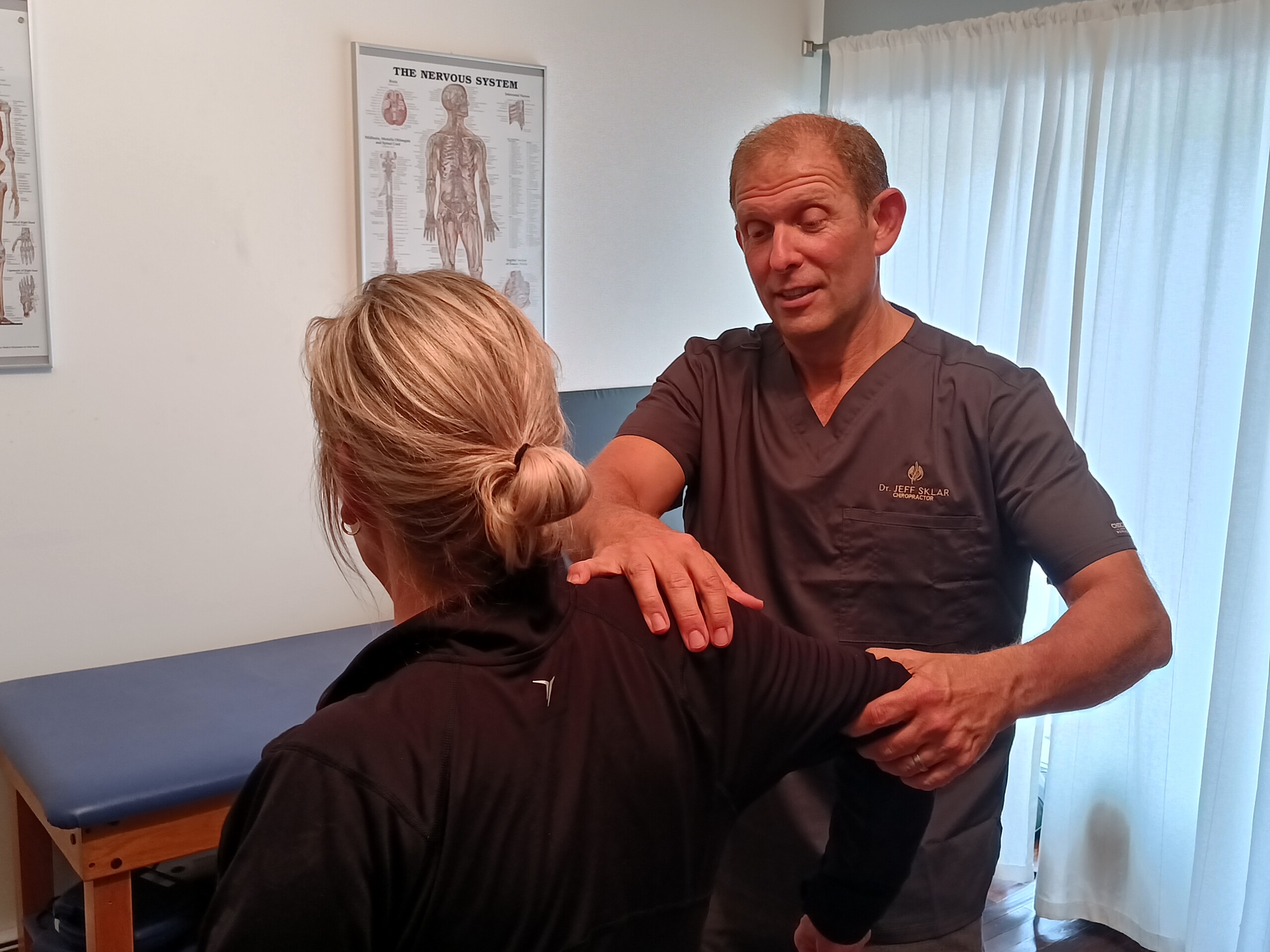Case Study CD-4
Integrative Cancer Treatment:
Chemotherapy Induced Peripheral Neuropathy
By: Jeffrey A. Sklar, D.C.
Introduction: Chemotherapy induced neuropathy is a frequent side effect many cancer patients must endure through treatment of their disease. Some holistic proactive strategies that are implemented before, during and after chemotherapy cycles have shown to help with the severity of neuropathy suffered by the patient. In the majority of sensory and sensorimotor neuropathy, patients experience symptoms as mild as paresthesia to more moderate symptoms such as the feeling of walking on glass to sever cases where balance and strength are severely compromised. The need to address this debilitating side effect of neurotoxicity is paramount, as patient compliance becomes a challenge. Cases exist where the treatment is killing the cancer, but the patient can no longer tolerate the neuropathy. This obstacle leaves medical oncologists with the dilemma of creating a new regimen and cocktail of chemotherapy treatment that does not have neuropathy as a side effect. A body of evidence exists in support of naturopathic approaches using L-Glutamine, acupuncture and specific forms of electric stimulation(1,2,3). This case study offers chiropractic as another modality to improve quality of life for cancer patients.
Case Presentation: Patient WC-ERMC4 is a 60 year old woman that has been receiving treatment for Stage IV Squamous Cell Carcinoma of lung to brain since July 2013. Brain surgery with gamma knife was well tolerated by the patient. However, other options for her lung cancer needed to be explored. The patient decided to proceed with aggressive treatment to fight the remaining disease. She began a course of concurrent chemoradiation therapy. During the 4 week course of Taxol and Carboplatin chemotherapy the patient developed Grade 2 sensory neuropathy. In an effort to retard and possibly reverse the progression of the neuropathic symptoms, the patient engaged in a course of complimentary therapy including ReBuilder electric stimulation, L-Glutamine and acupuncture. However, the patient’s symptoms were not abated and only slightly diminished, as she reported a state of severe compromise with respect to the sensory component of pedal function. The patient described her symptoms as a feeling of her toes being taped together. She also stated the bottom of her feet feel like sandpaper when she walks. Additionally, the sensory component led to balance issues for the patient. The patient’s medical oncologist suggested she try chiropractic care in addition to the other therapies.
Assessment, Management and Outcome: Chiropractic evaluation of the patient revealed moderate hypertonicty of lumbar paraspinal muscles, tibialis anterior, and gastrocnemius , bilaterally. Plantar and dorsi-flexion of both feet were restricted and spasmodic. Severe sensitivity was noted on light to moderate touch to distal phalanxes of the feet as well as volar sufaces. Moderate rigidity and joint restriction was noted on motion palpation of tarsal-metatarsal and metatarsal-phalangeal joints. The patient demonstrated normal range of motion in the lumbar and lumbo-sacral spine. Moderate restriction of L-5 joint was noted. The treatment plan consisted of two visits per week. Prior to each adjustment, the patient would give an analog report on her neuropathy from 0-10, 10 being the most severe symptoms and 0 being the absence of neuropathy. The first visit the patient rated her neuropathy at a 9. After subjective information was gathered the patient was assessed for spinal subluxation and joint restriction in her lower extremities. Following the assessment the patient would receive treatment designed to reduce the neuropathic pain and improve joint function. Treatment consisted of an initial application of a proprietary herbal remedy designed to reduce inflammation and pain. The ointment was applied to each digit distal to proximal. After the application of the ointment, instrument adjusting was performed on PIP and DIP joints, metatarsals and tarsal that demonstrated restricted motion. Finally, spinal adjust was also performed instrumentally. The patient reported that after her first visit she could feel her individual toes, a feeling he had not had for some time. She also stated that she did not feel the sandpaper sensation on the bottom of her feet during ambulation. Additionally, she reported feeling more balance and stability while ambulating.
After one month of care, the patient stated that her subjective complaint of neuropathic pain and loss of sensation was holding steady at a 3 of 10. She stated that each chiropractic visit offered her 24-48 hours of continual relief and improvement from the neuropathy.
Discussion: Chemotherapy induced neuropathy plays a large factor in patient compliance. When viewed from a quality of life perspective in an integrative model of care, patients should be offered any non-invasive treatment or modality to help offset the neuropathic side effect to assist in the desired chemotherapeutic outcome. This case demonstrates that in addition to acupuncture, naturopathic prescriptions and electric muscle stimulation, chiropractic can offer significant t and lasting results, thus allowing the patient to finish a regiment of medical care with a hopeful desired outcome of cancer remission. These results create an impetus to further exploration in this treatment for neuropathy and more data collection. Additionally, a feasibility study is warranted to determine more people with this debilitating treatment side effect can be helped. .
Key Words: chiropractic, cancer, neuropathy, chemotherapy
1.Evaluation of acupuncture in the management of chemotherapy-induced peripheral neuropathy. Donald GK. Tobin I. Stringer J. Acupuncture in Medicine. 29(3):230-3, 2011 Sep. Donald, Graeme K. Tobin, Irene. Stringer, Jacqui.
2.Pilot trial of a patient-specific cutaneous electrostimulation device (MC5-A Calmare) for chemotherapy-induced peripheral neuropathy. Smith TJ. Coyne PJ. Parker GL. Dodson P. Ramakrishnan V. Journal of Pain & Symptom Management. 40(6):883-91, 2010 Dec.
- Oral glutamine for the prevention of chemotherapy-induced peripheral neuropathy. [Review] [30 refs] Amara S. Annals of Pharmacotherapy. 42(10):1481-5, 2008 Oct.


